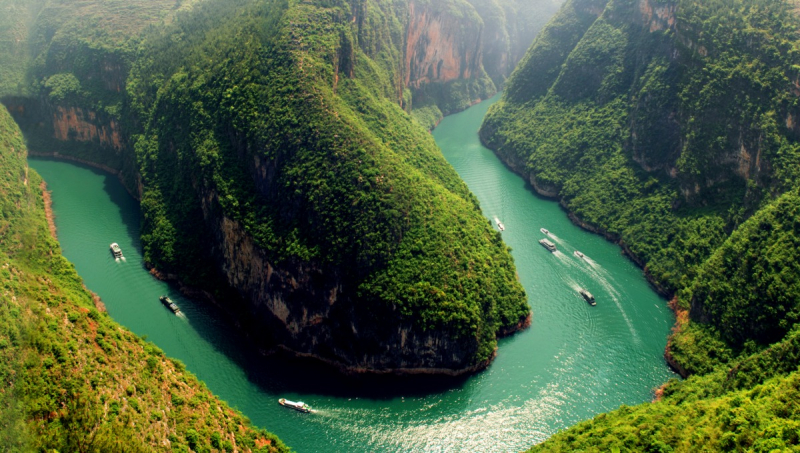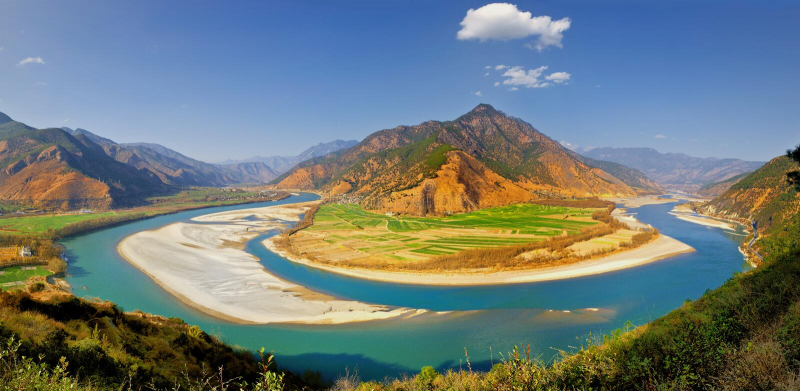Yangtze River

The source of the Yangtze River is in the Tibetan Plateau and it empties into the East China Sea. It is also China's longest river, flowing across ten provinces. The river runs through a variety of terrain, although most of its voyage is spent in mountainous regions, including some breathtakingly gorgeous spots with deep valleys and canyons. Around 700 tributaries feed the river, including eight major rivers: Yalung, Min, Jialing, Han, Wu, Yuan, Xiang, and Gan. The Yangtze River is approximately 6300 kilometers long and drains an area of 1,808,500 square kilometers. It is the world's third longest river, behind the Amazon (South America) and the Nile (Africa), and it is longer than the Mississippi River (USA).
Yangtze (Meaning "son of the ocean") is also known as Yangtze Kiang in China. The Yangtze River is historically, culturally, and economically significant to China. The river basin is home to more than a third of China's population. This basin accounts for more than two-thirds of total rice production and has around 30 species of economic relevance to China's commercial fisheries. It is also China's principal waterway, with heavy commerce and passenger flow.
Detailed information:
Length: 6,300 km
Source: Qinghai
Country: China











